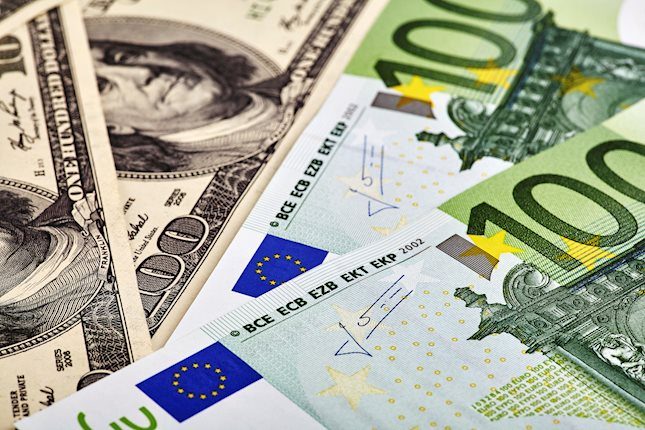Officially declared a pandemic by the World Health Organization (WHO) on 11 March, coronavirus is an unprecedented public health issue.
According to the WHO, cases of pneumonia of unknown cause emerged in Wuhan City, China, on 31 December, 2019. A novel coronavirus was identified as the cause by Chinese authorities on 7 January, 2020, and was temporarily named ‘2019-nCoV’. Coronaviruses (CoV) are a large family of viruses that cause illness ranging from the common cold to more severe diseases. A novel coronavirus (nCoV) is a new strain that has not been previously identified in humans.
Although referred to as coronavirus, or coronavirus pandemic, the WHO recently announced the official name of the infectious disease as Covid-19. The virus is described as ‘Severe Acute Respiratory Syndrome Coronavirus 2’, or ‘Sars-CoV-2’, said to have originated from the illegal sale of wild animals in Wuhan City. The hunt for the animal origin of Covid-19, however, is still unknown.
As guided by the Centers for Disease Control and Prevention (CDC) and other public health officials in the United States and other countries, employees are transitioning to remote work in order to comply with recommendations concerning social distancing and lockdown protocol. The cybersecurity of corporate networks, therefore, have become potentially exposed.
Firewalls and Virtual Private Networks (VPNs) are in place to keep unknowns from gaining access to company resources. Though with many now working outside the company network, it alters the dynamic of cybersecurity. Such a huge change in business operations could expose companies even after the Covid-19 is contained. For those businesses suffering from supply chain issues, poor cash flow and shutdown of non-essential business, business continuity is a serious concern.
Volatility across financial markets has also increased exponentially. Events are developing at breakneck speed with market sentiment and fundamentals shifting in response to the spread of Covid-19. To accommodate these volatile markets during the Covid-19 pandemic, adapting your trade plan is essential to meet the wider range of price action.
Pulling out All the Stops
Since early March, daily moves between 100 to 300 pips on EUR/USD have been the norm. A stark contrast to market conditions a few months ago.
The protective stop-loss order helps prevent excessive losses and margin calls. Even under normal market conditions It is an essential risk-management tool. Given notable increase in volatility, stop-loss placement is a concern for many traders. Widening stop distance is, of course, an option to help overcome this, though do bear in mind this also increases risk If position size is not accounted for.
The way traders reduce risk to breakeven may also require modification. In times of market volatility, positions need ‘more room to breathe’ – price movement can connect with the entry price a number of times before settling on a direction.
Protecting gains when they occur is also just as important. Prudent traders will respect take profit targets, or at least use a trailing stop to prevent a winning position turning into a loser.
Leverage
Most traders employ leverage to maximise returns. Higher leverage often leads to bigger profits, particularly in Forex trading. However, it is a two-sided coin, equally increasing gains and losses. Adjusting leverage to account for wider movement of market price is, therefore, certainly something traders will be considering.
Trade Duration
Covid-19 is uncharted waters for all. Whether it be quarterly results from a publicly-traded company or unemployment figures, traders are essentially trekking unknown terrain. News reports concerning Covid-19 grace our screens on an hour-to-hour basis, so it is essential to stay plugged in to the latest news and track open positions.
Still, it’s impossible to monitor positions 24/7 or over the weekend when access is limited. That’s why some traders are currently choosing to liquidate positions before the close of trade each day.
Equity Risk
In parallel with leverage, traders will also consider paring back and trading smaller risk. If you already have strict position-sizing rules in place, this may not apply.
If you are currently risking 3-5% of your account equity each trade, you may want to abide by 1-2%. Though, it really all depends on what risk you are personally comfortable with. Risking 5% per trade, for example, means if you lose 20 consecutive trades, unlikely but still a possibility, your account could be wiped out. This is certainly something to take into account in these unprecedented times.
Orders
Two core order types are used in the market. A market order is executed immediately at current prices, while a limit order is executed when the limit price is met.
As limit orders are not triggered unless conditions are met, they are effective tools to help protect traders from volatility. Another benefit is the ability to execute multiple trades simultaneously in different markets when such opportunities arise.
Covid-19 Trading
The virus continues to tax health systems and health care workers around the world. Many essential workers in the United States do not have any form of sick leave, which makes it difficult for them to visit healthcare systems for care. This, along with their continued exposure to the virus, has led to strikes and work stoppages.
Misinformation about the virus and disease also continue to proliferate social media. These posts have compared the Covid-19 to the flu and suggest the public reaction to the disease is overblown. This misinformation could lead to large numbers of people disregarding orders to practice social distancing and isolation, therefore potentially exacerbating the crisis.
Covid-19 is clearly having a dramatic effect on financial markets. Therefore, it’s vital to monitor your risk-management strategies to fit this challenging trading environment. The trading tips highlighted in this article should help minimise losses and keep your account on the straight and narrow.
This material on this website is intended for illustrative purposes and general information only. It does not constitute financial advice nor does it take into account your investment objectives, financial situation or particular needs. Commission, interest, platform fees, dividends, variation margin and other fees and charges may apply to financial products or services available from FP Markets. The information in this website has been prepared without taking into account your personal objectives, financial situation or needs. You should consider the information in light of your objectives, financial situation and needs before making any decision about whether to acquire or dispose of any financial product. Contracts for Difference (CFDs) are derivatives and can be risky; losses can exceed your initial payment and you must be able to meet all margin calls as soon as they are made. When trading CFDs you do not own or have any rights to the CFDs underlying assets.
FP Markets recommends that you seek independent advice from an appropriately qualified person before deciding to invest in or dispose of a derivative. A Product Disclosure Statement for each of the financial products is available from FP Markets can be obtained either from this website or on request from our offices and should be considered before entering into transactions with us. First Prudential Markets Pty Ltd (ABN 16 112 600 281, AFS Licence No. 286354).
Recommended Content
Editors’ Picks

AUD/USD: Calls for a drop to the 2024 Low appear overstretched
AUD/USD broke below the key support at 0.6600 the figure and the critical 200-day SMA with certain conviction, all hinting at the idea that extra weakness lies ahead for the Aussie Dollar in the near to medium term.

EUR/USD could face some consolidation ahead of data, US elections
An acceptable recovery in the risk-associated universe on Monday lent extra wings to EUR/USD and lifted it back above the 1.0800 barrier following the US Dollar’s inconclusive price action ahead of crucial data releases across the ocean.

Gold retains its bullish bias around $2,740
Gold is having a hard time building on Friday's gains and trades in a narrow band below $2,750 on Monday. Nevertheless, safe-haven demand stemming from Middle East tensions and US election jitters help XAU/USD limit its losses.

XRP trades above $0.51 as former SEC lawyer critiques Biden administration for approach on crypto regulation
Ripple (XRP) holds steady above $0.5100 on Monday. The native token of the XRP Ledger noted no significant price change for the day.

November flashlight for the FOMC blackout – Period dialing back the pace of easing
The FOMC started its nascent easing cycle with a bang, opting to reduce the fed funds target range by 50 bps to 4.75%-5.00% at its last meeting on September 18. But further policy easing seems set to proceed at a slower pace.

Best Forex Brokers with Low Spreads
VERIFIED Low spreads are crucial for reducing trading costs. Explore top Forex brokers offering competitive spreads and high leverage. Compare options for EUR/USD, GBP/USD, USD/JPY, and Gold.